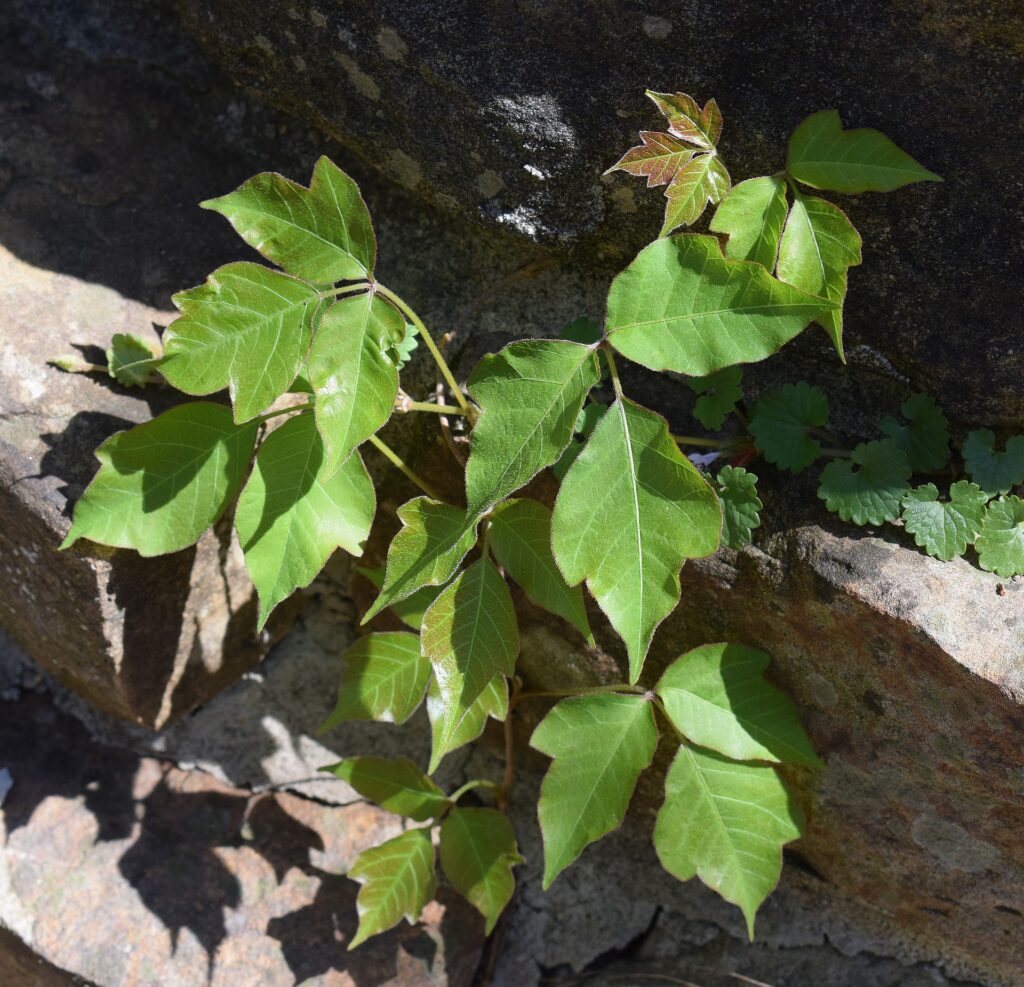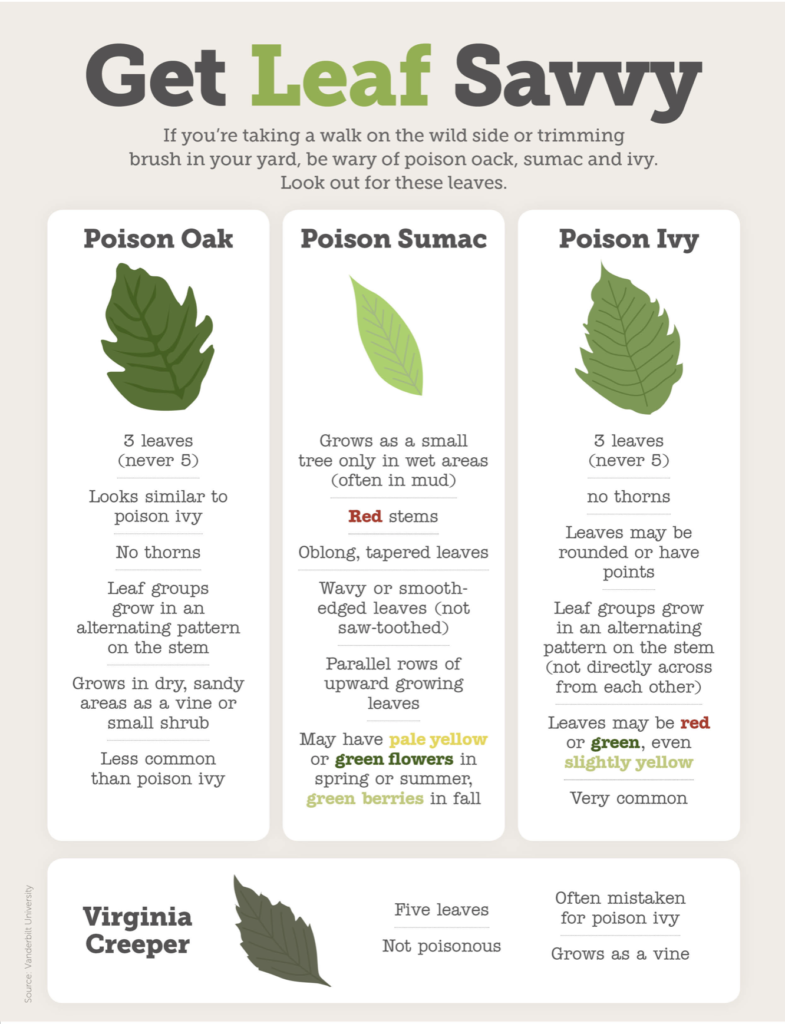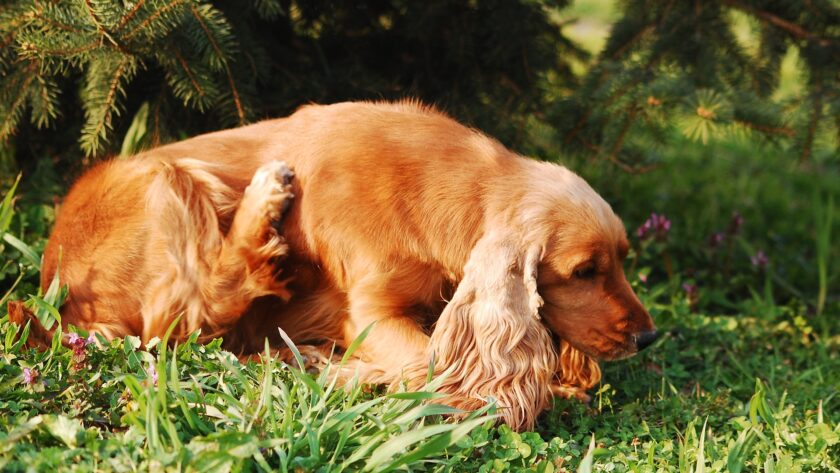You may be wondering “Can dogs get poison ivy?”
Poison ivy is a plant that produces an oily substance called urushiol. This oil is responsible for causing the reaction that many people and dogs have to poison ivy.
Once the substance comes into contact with skin, fur, or clothing, it can be rather difficult to remove.
The biggest danger from this plant is during the spring and summer months since the oil content in the plant is very high at that time. (source: hgic.clemson.edu-poison Ivy)

Can Dogs Get Poison Ivy?
Yes, dogs can indeed get poison ivy, although it is less likely due to their skin being covered with a protective fur.
Some dogs are more susceptible due to being shorter, with bare tummies. Being lower to the ground makes rubbing up against poison ivy more likely.
Hairless breeds such as the Chinese Crested, or the American hairless terrier may also be at higher risk since they don’t have fur to protect them.
How to Identify Poison Ivy
Poison ivy is a plant with three leaves.
The leaf in the middle has the longest stem.
If you aren’t 100% sure you can identify the plant, it’s best to observe the rule “leaves of three, let them be.”
Poison ivy can grow as either a shrub or a vine.
A vine with a hairy appearance should also be avoided.
Other Plants That Produce Urushiol

Symptoms of Poison Ivy
- Itchy rash
- Redness / Swelling
- Blisters
- Vomiting (if ingested) If your dog eats poison ivy, it is considered a mild toxin, and may result in gastrointestinal distress. In this instance, it’s best to consult your vet.
- Diarrhea (if ingested)
Related post: Can dogs eat bell peppers?
Where is Poison Ivy Commonly Found?
Poison ivy prefers partially shaded areas.
It is especially fond of growing along tree lines, and in or around rock piles.
It can also be found around homes, in landscaping, woods, fields, or along hiking trails.
In its vine form, poison ivy likes to grow up trees, fences, and electric poles. It may also be found cascading over walls.
Poison ivy turns a bright red color in the fall, and can sometimes go unnoticed among the colorful fall foliage.
What Should I Do If My Dog Comes Into Contact With Poison Ivy?
- Firstly, make sure you wear gloves and protective clothing to handle your pet because the urushiol on the dogs fur can transfer to your skin, causing a reaction. (dmu.edu Everything you need to know about poison ivy)
- Secondly, bathe your dog as soon as possible after exposure to poison ivy. You can use Dawn dish liquid, or any dog safe shampoo.
- Thirdly, either wash the gloves and protective clothing in hot water, or carefully dispose of them. The oils can remain active on clothing and other objects for years.
Final thoughts:
Even though dogs are not at high risk for getting a poison ivy rash,
It’s best to familiarize yourself with these plants, and avoid them.
Since dogs can get poison ivy, oak, and sumac.
Practice identifying and avoiding all 3 of the plants.
This article is not intended as medical advise or treatment of any kind.
This post contains affiliate links, which means we make a small commission at no extra cost to you. See our full disclosure Privacy Policy.
Contents



